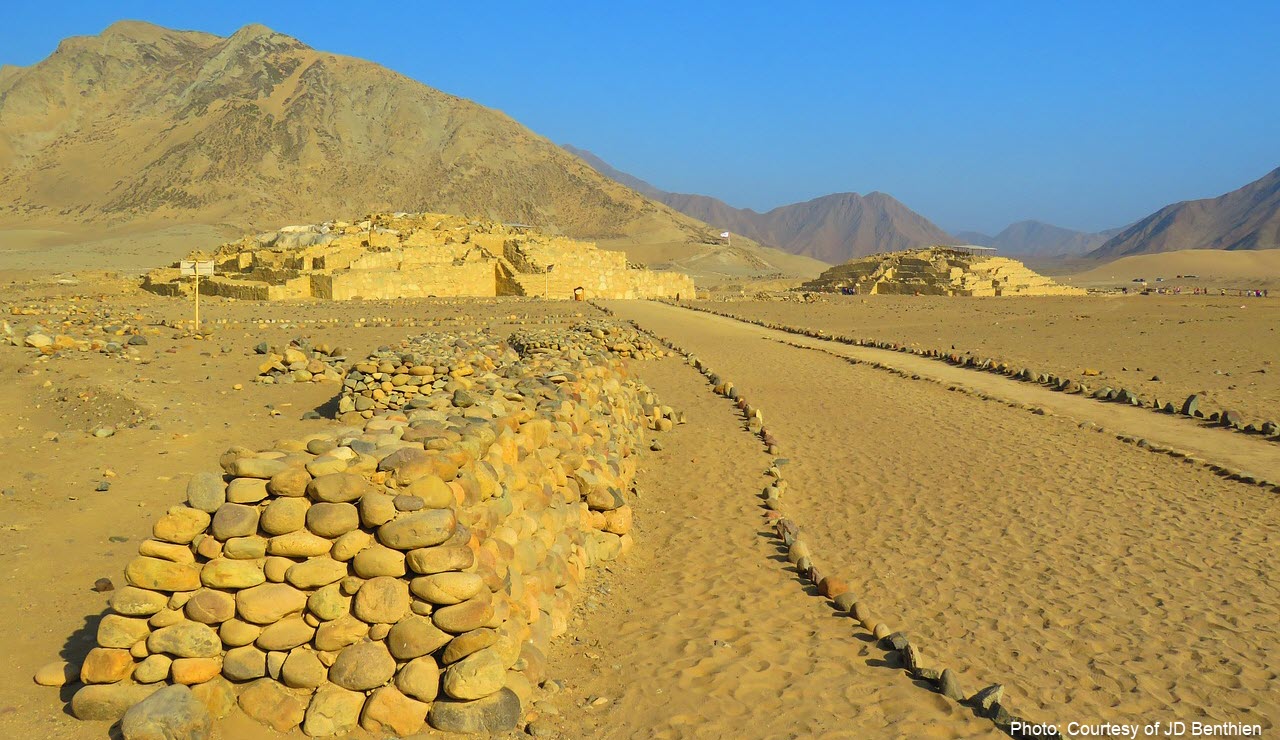Latin America
Showing Original Post only (View all)Caral, America's Oldest City [View all]
By Georges Fery Sat, Apr 15, 2023
Before the pyramids of Egypt and the Ziggurats of Mesopotamia, an ancient monumental civilization arose with massive pyramids near the north-central coast of Peru in South America.

The cluster of valleys on the banks of the Supe River in the north-central coastal region of Peru, known as the Norte Chico, stands out among other geographical areas for the number, size, and complexity of its very early monumental ancient human settlements. It is a witnesses to an extraordinary past. Its early urban centers include Banduria (4000-2000BC), Aspero (3700-2500BC), and Caral, also referred to as Caral-Supe (3500-2000BC). Caral far surpasses the other two in power and influence and has been called “the oldest city in the Americas, and one of the earliest cities in the world” (Mann, 2005). In fact, the rise of civilization in Peru preceded the Olmec civilization, believed to be the oldest in Mesoamerica, by at least 1500 years (Shady, 1994). However, unlike cultures in other parts of the world, the Peruvian urbanization took place in total isolation.
The Beginning
Hunting and gathering for subsistence, in what is now Peru’s Norte Chico, is documented as early as 9500-8000BC. Small groups started plant selection and gardening, and the remains of irrigation channels have been dated to that period. New concerns with the cosmos and religion led to the unification of nascent social groups around spiritual concepts. In turn, this collective perception brought social stratification, followed by an economic cooperation that swept the Andes and Northern Peru’s coastal communities (Shady, 1997). Agriculture expanded, and by 3200 BC, harvested cotton was an already important trade crop, used to make nets for fishing, and later net-bags (shicras) employed in construction. Domestication of camelids such as llamas also grew around this time.

The Great Pyramid @peruinfo.com
The Rise
So, let’s follow the field notes of renowned Peruvian archaeologist Ruth Shady Solis and others, to look at how ancient civilizations in this region rose and fell. The fertile Supe River and its affluents wind their way to the coast from the western piedmont of the Andes to the dry coastal plains. Its lush valley is host to twenty-one ancient settlements that share a common architecture and urban distribution dating from the Late Archaic period (3500BC). On the Pacific Coast, at the mouth of the Supe River, is the Late Archaic site of Aspero (3700-2500 BC). This coastal town seems to be the origin of human settlement in this part of the Norte Chico. As demographic pressure increased at Aspero together with social complexity, communities split into groups that moved up the Supe River valley, establishing villages upstream. Aspero’s location, however, gave the town a key role in the initial economic development of the region, providing access to the abundant schools of fish that rode the cold northbound Humboldt current, as well as control of the sea salt trade with growing inland communities.
Caral and other close communities were built fourteen miles up the coast in the 60-mile-long Supe River valley, on the arid plateau extending on both banks of a ravine and the fertile but narrow valley where crops were planted. The settlements on the plateau on each of the upper sides of the ravine were thus protected from seasonal floods. In the 3500-3200 BC time frame, Caral (165 acres) grew from a village to a city together with Era de Pando (200 acres) and Pueblo Nuevo (135 acres), while neighboring hamlets such as Cerro Colorado, Liman, or Cerro Blanco did not exceed two or three acres.
More:
https://popular-archaeology.com/article/caral-americas-oldest-city/